-
I used Rhino works for this project as I find it much easier to navigate, cross check and change dimensions
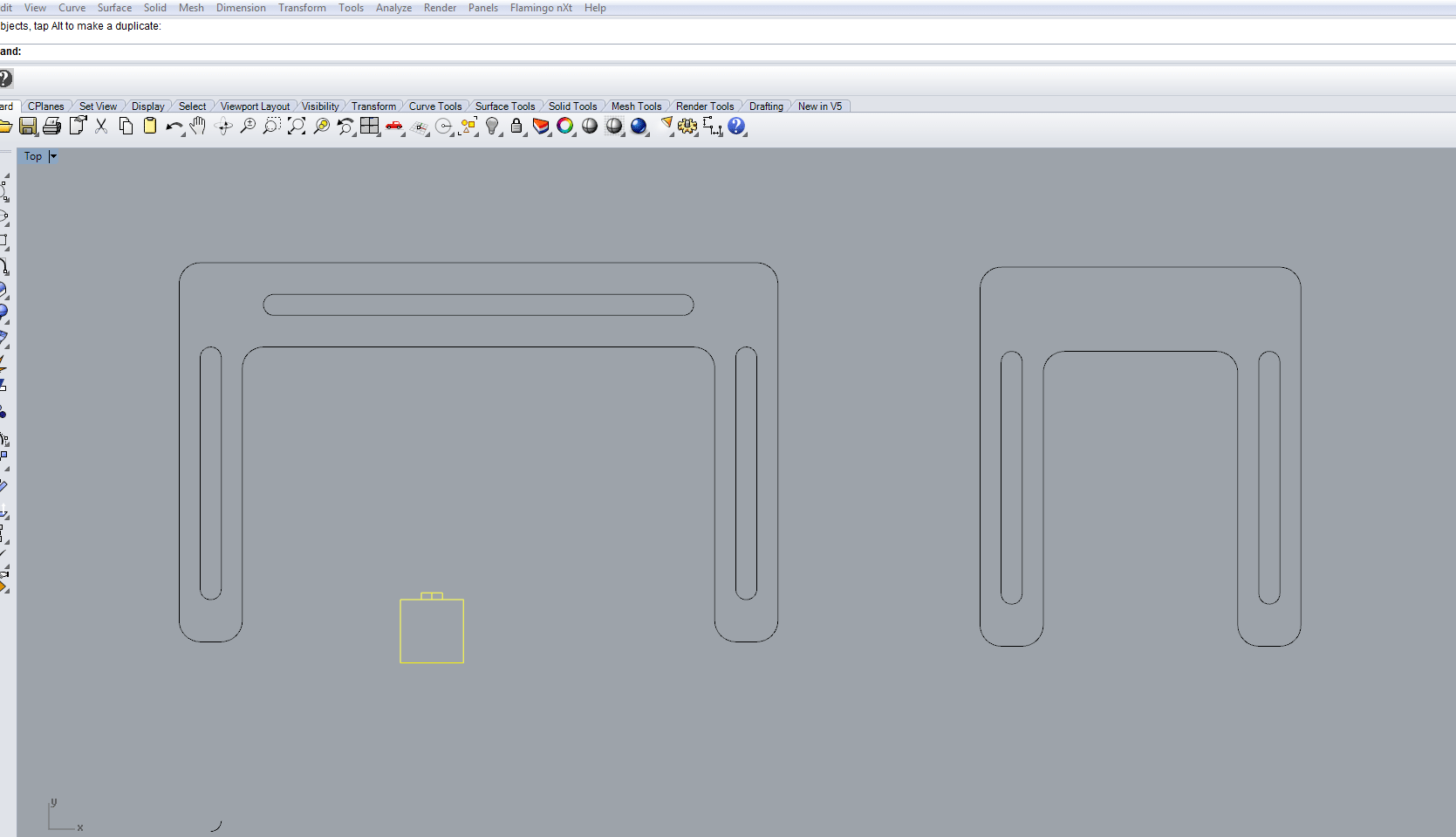
-
as this is part of my final project, I want to achieve a snap-fit model. I am using 16mm MDF (Super wood) as this is a really cheap wood and we have quite a bit of stock of this. This was my first version and immediately I ran into sum design flaws:
-
the arms on the part are too long and therefore will break
-
the spacing to hold the legs is to small ( initially made it 16mm then changed it to 17.5mm as a sheet of wood is irregular in thicknesses)
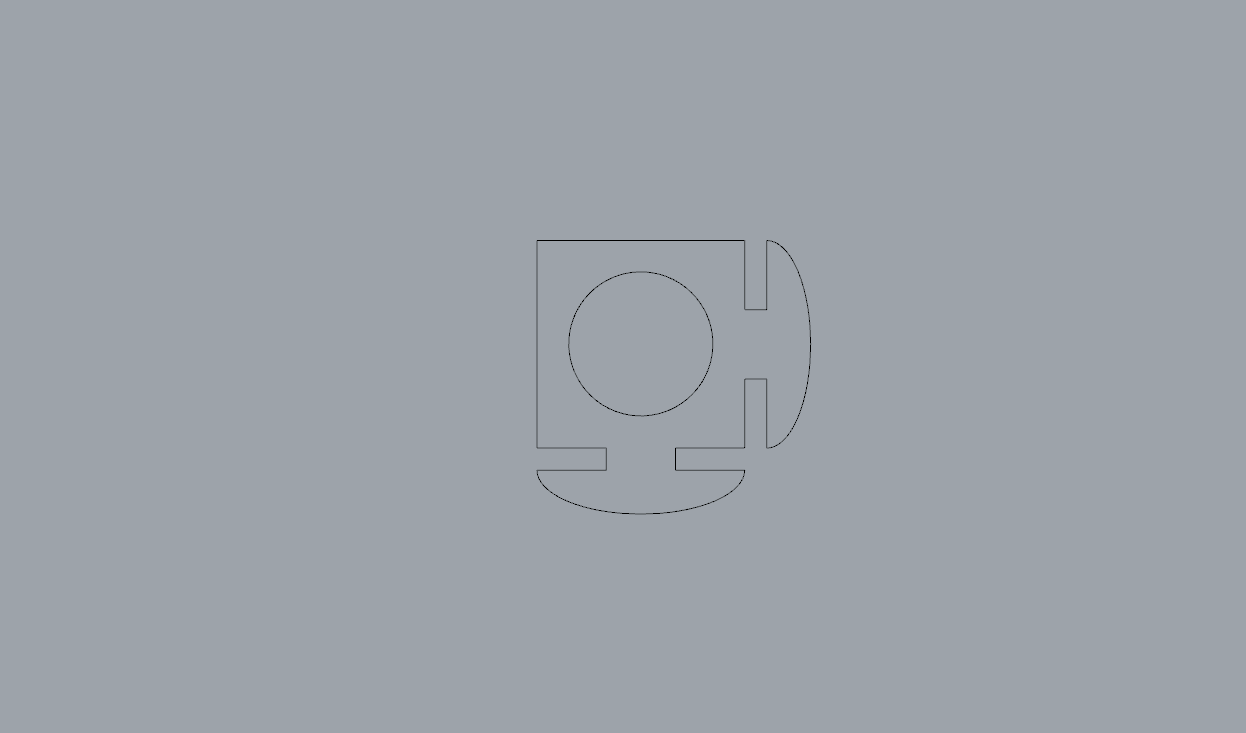
-
Second profile
-
I don’t like the angular profiles of this design, although it does work functionally/time to incorporate the first and second design into a final one
-
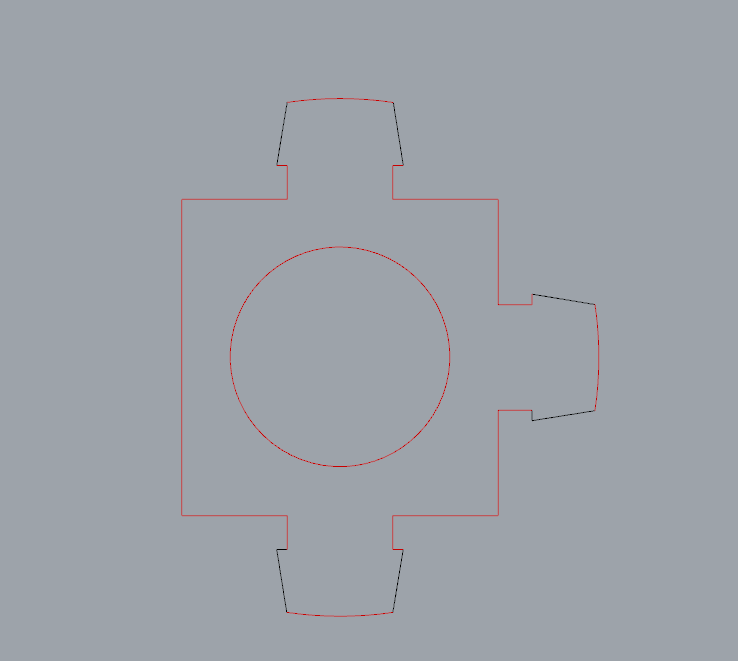
- New designed profile which will work with my design
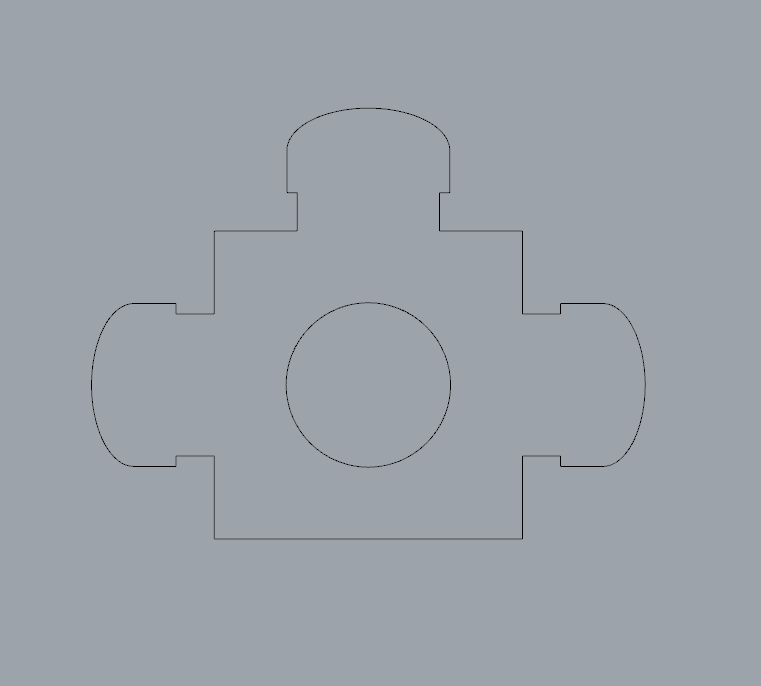
- On the table legs I added notches to enable me to assemble it easier
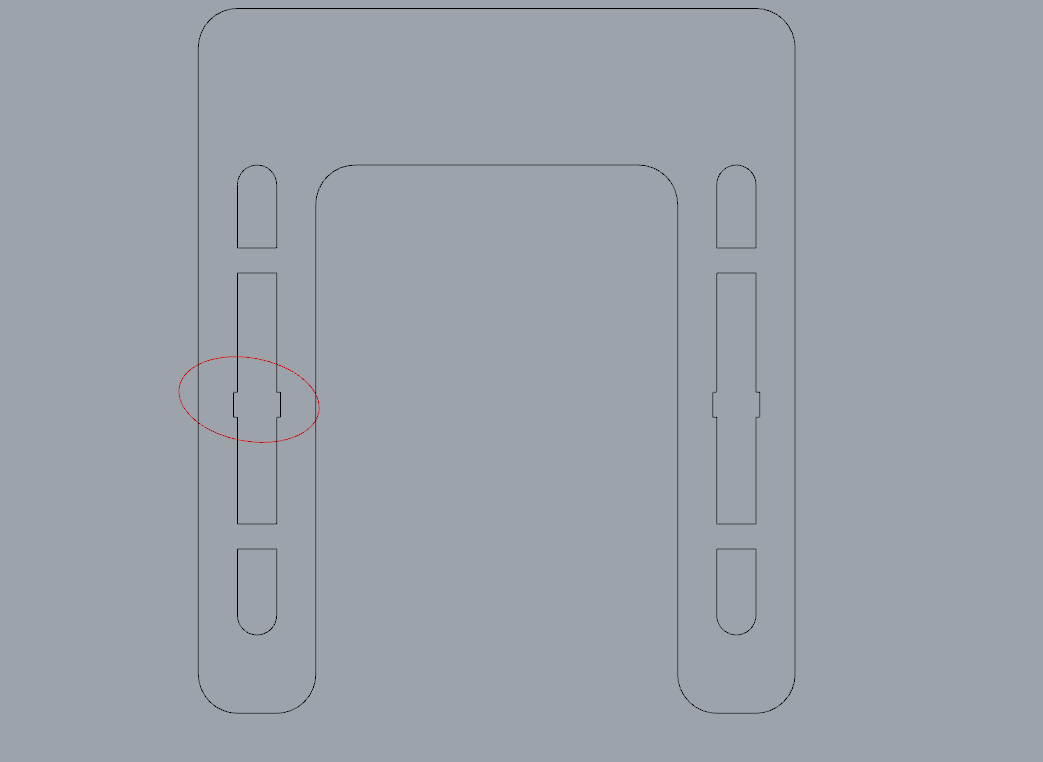
- The dimensions I used are based on the study of the human body (Ergonomics) the following links should help with this.
https://en.wikipedia.org/wiki/Human_factors_and_ergonomics
http://www.chasemassagetherapy.com/blog/ergonomics -
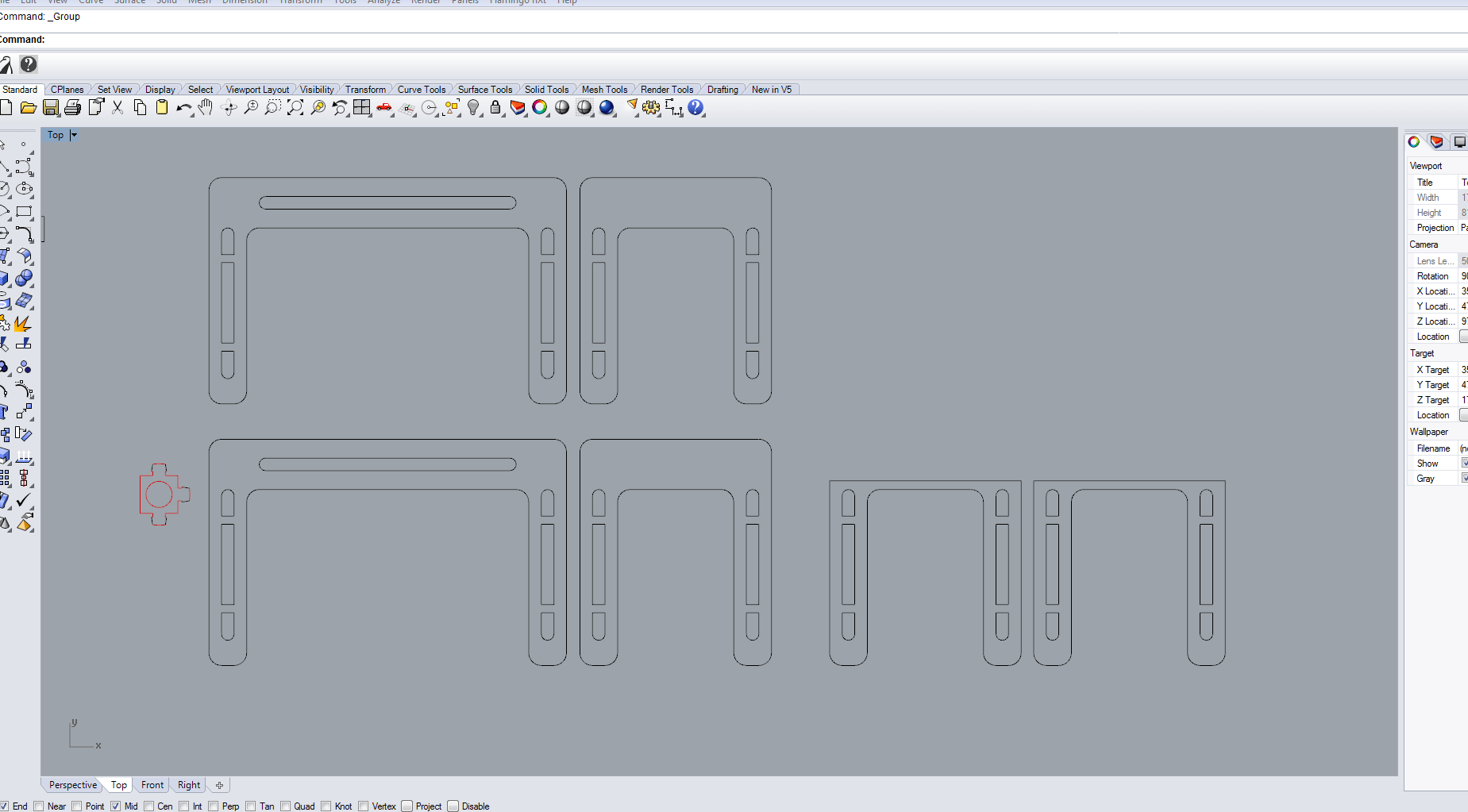
- Cutting list, it is important to plan your list to minimize waste (I added sum other components for a other project to fill all material)
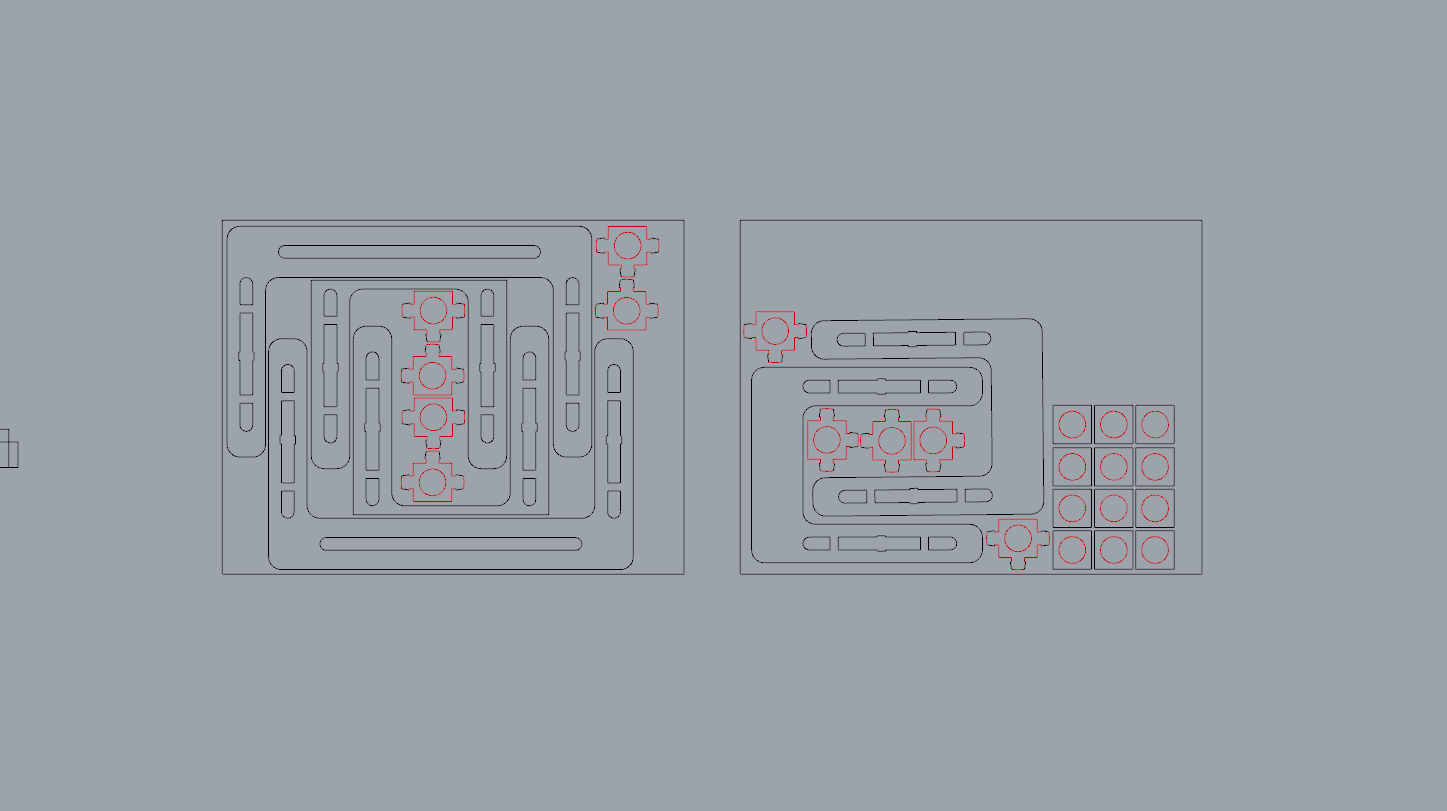
- Time to start cutting (Machine: Shopbot PRS ALPHA 96 with a 6mm DIA bit)
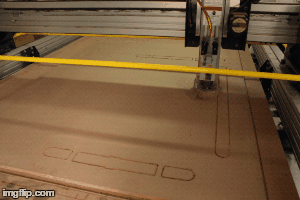
- Assembly was rather difficult as there are three parts to a leg and fitting the holders was rather tedious.
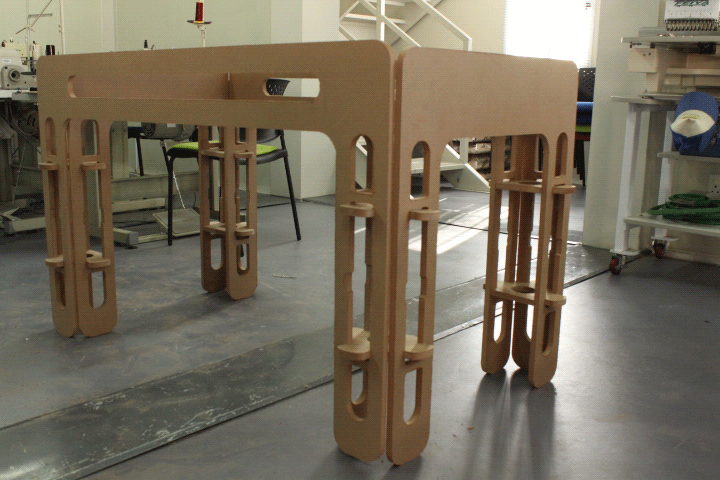
- Holders have a very tight fit; I would recommend making the spacing a bit larger, just enough to hold the three parts together.
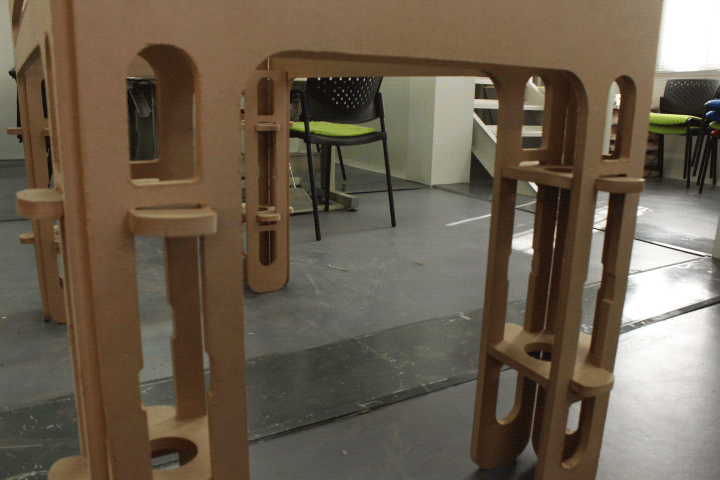
- Leg with support for the foosball bed to lie on (I’m planning to make the bed in the composites section).
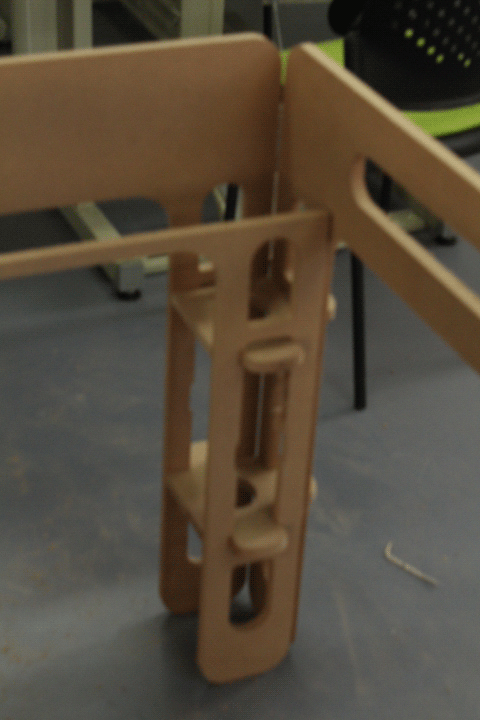 Finished main part of my foosball table
Finished main part of my foosball table
-
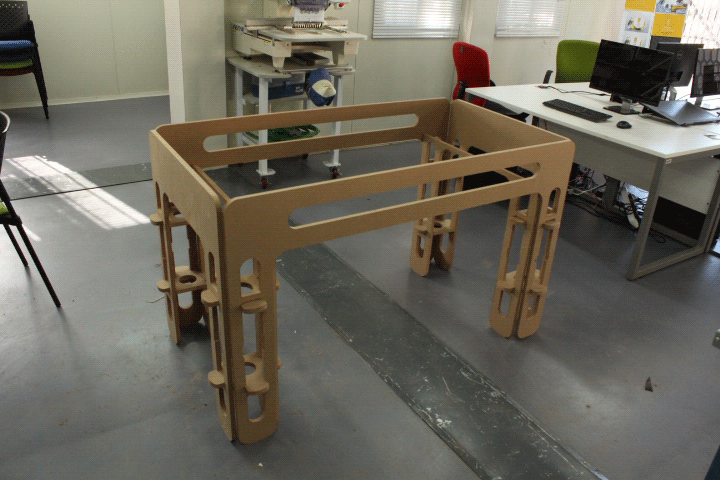
otherIssues I had and am still having
-
The Pieces did not fit 100% and it made me have to either re-cut everything and create dog bones in the V-carve at all my joints. This I did not have time for so I redesigned my plans and parts and will re-cut once time allows.
Here are the steps of creating dog bones: In the v-carve program you select fillets, select dog bone and then enter the diameter of the Bit your using.
.gif)
- It will then look like this picture below. At every joint I added these bones to make assembly much easier.

Downloads
